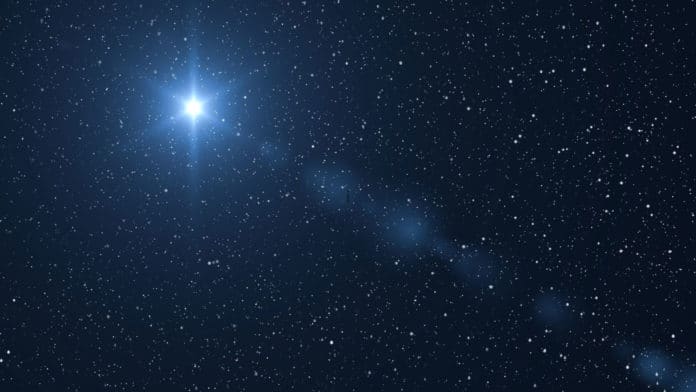Neutron stars are the dense leftovers of a massive star’s supernova explosion. As the neutron star spins, it can produce radio wave beams that sweep across the sky, producing regular flashes like cosmic lighthouses. Scientists have known more than 3000 neutron stars in our Galaxy.
An international team of scientists led by members of the ERC-funded MeerTRAP (More Transients and Pulsars) group at The University of Manchester– has discovered a strange radio-emitting neutron star, which rotates extremely slowly, completing one rotation every 76 seconds. The discovery of this strange rotating star is unlike anything seen so far.
Scientists reported- it is a unique discovery as it belongs to the neutron star graveyard, where they do not expect to see any radio emission at all.
Scientists named the neutron star PSR J0901-4046, which shows characteristics of pulsars, (ultra-long period) magnetars and even fast radio bursts. The radio energy emanating suggests a pulsar origin; the pulses with chaotic sub-pulse components and the polarization of the pulses are reminiscent of magnetars.
The discovery was made using the MeerKAT radio telescope in South Africa. The MeerTRAP instrument initially detected a single flash or pulse- while carrying on imaging observations- led by a different team, ThunderKAT.
Then MeerTRAP and ThunderKAT collaborated to figure out where it came from. It was subsequently possible to validate the pulsations and get an accurate position for the source by combining the data from the two teams, allowing for more thorough and sensitive follow-up observations.
Dr. Manisha Caleb, formerly from The University of Manchester and now at the University of Sydney, who led the research, said: “Amazingly, we only detect radio emission from this source for 0.5% of its rotation period. This means that it is very fortuitous that the radio beam intersects with the Earth. Therefore, it is likely that there are many more of these very slowly spinning sources in the Galaxy, which has important implications for how neutron stars are born and age.”
“The majority of pulsar surveys do not search for periods this long, so we have no idea how many of these sources there might be. In this case, the source was bright enough that we could detect the single pulses with the MeerTRAP instrument at MeerKAT.”
The spin period of this strange neutron star was more consistent with a white dwarf. It remains elusive how long this source has been emitting on the radio. It was discovered in a well-studied part of the Galaxy, but radio surveys don’t usually search for long periods or pulses that last more than tens of milliseconds.
Professor Ben Stappers at The University of Manchester and Principal Investigator of the MeerTRAP project said, “The radio emission from this neutron star is unlike any we have ever seen before. We get to view it for about 300 milliseconds, which is much longer than most other radio-emitting neutron stars. There seem to be at least seven different pulse types, some of which show strongly periodic structures, which could be interpreted as seismic vibrations of the neutron star. These pulses might be giving us vital insight into the nature of the emission mechanism for these sources.”
Dr. Ian Heywood from the ThunderKAT team and the University of Oxford, who collaborated on this study, said, “The sensitivity that MeerKAT provides, combined with the sophisticated searching possible with MeerTRAP and an ability to make simultaneous images of the sky made this discovery possible. It took an eagle eye to recognize it for something that was possibly a real source because it was so unusual looking!”
This new finding strengthens the case for a new type of radio transients known as ultra-long period neutron stars, implying a link between the evolution of highly magnetic neutron stars, ultra-long period magnetars, and fast radio bursts.
Journal Reference:
- Caleb, M., Heywood, I., Rajwade, K. et al. Discovery of a radio-emitting neutron star with an ultra-long spin period of 76 s. Nat Astron (2022). DOI: 10.1038/s41550-022-01688-x
